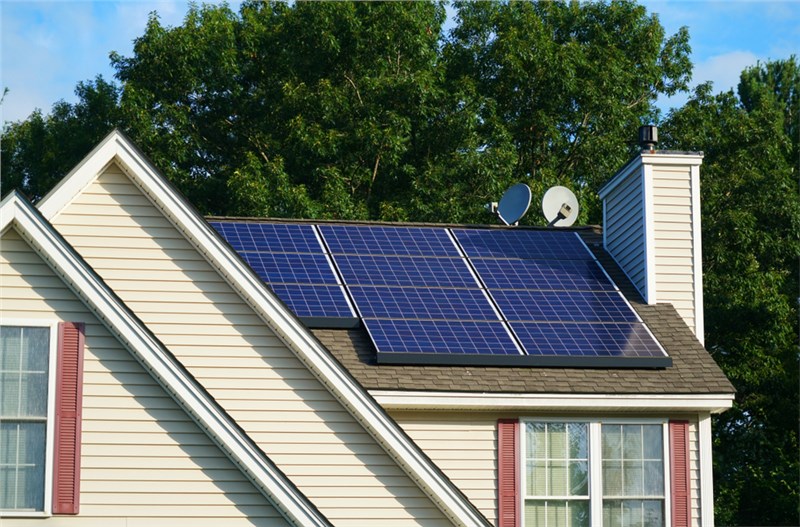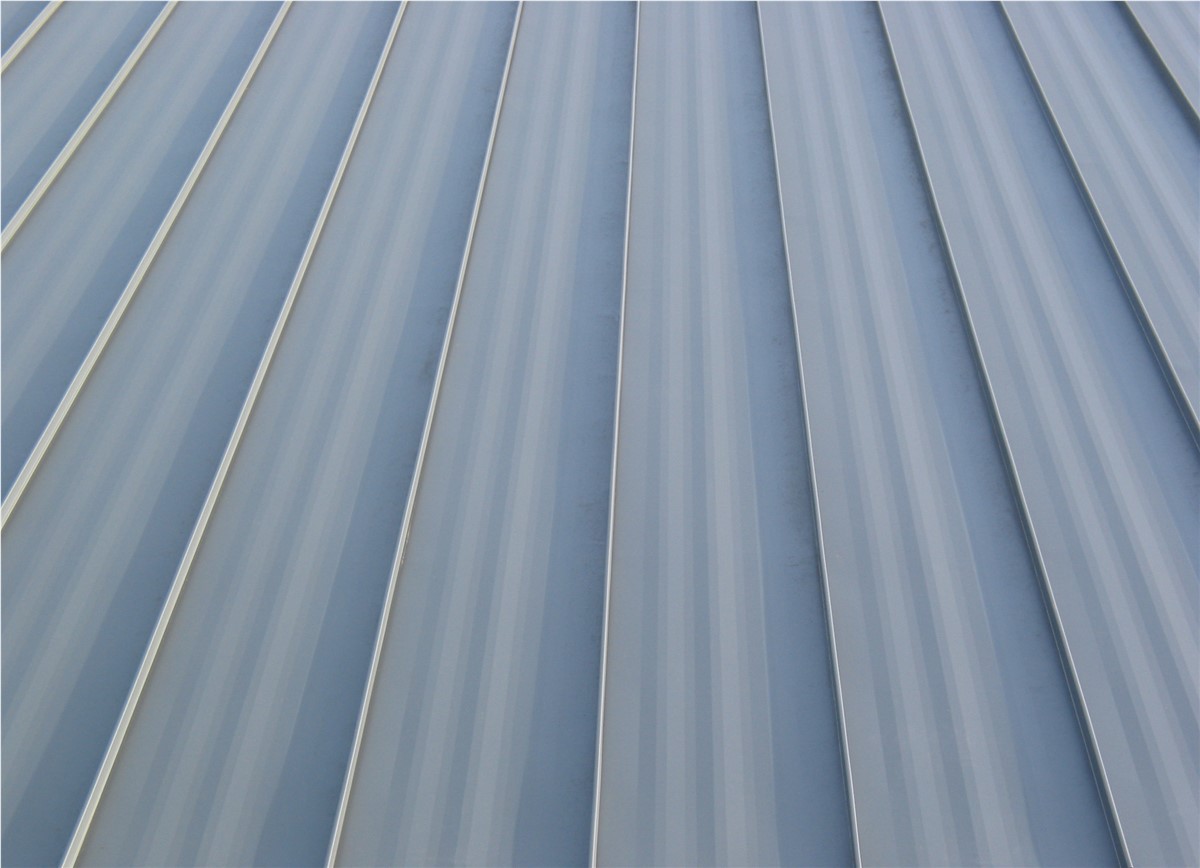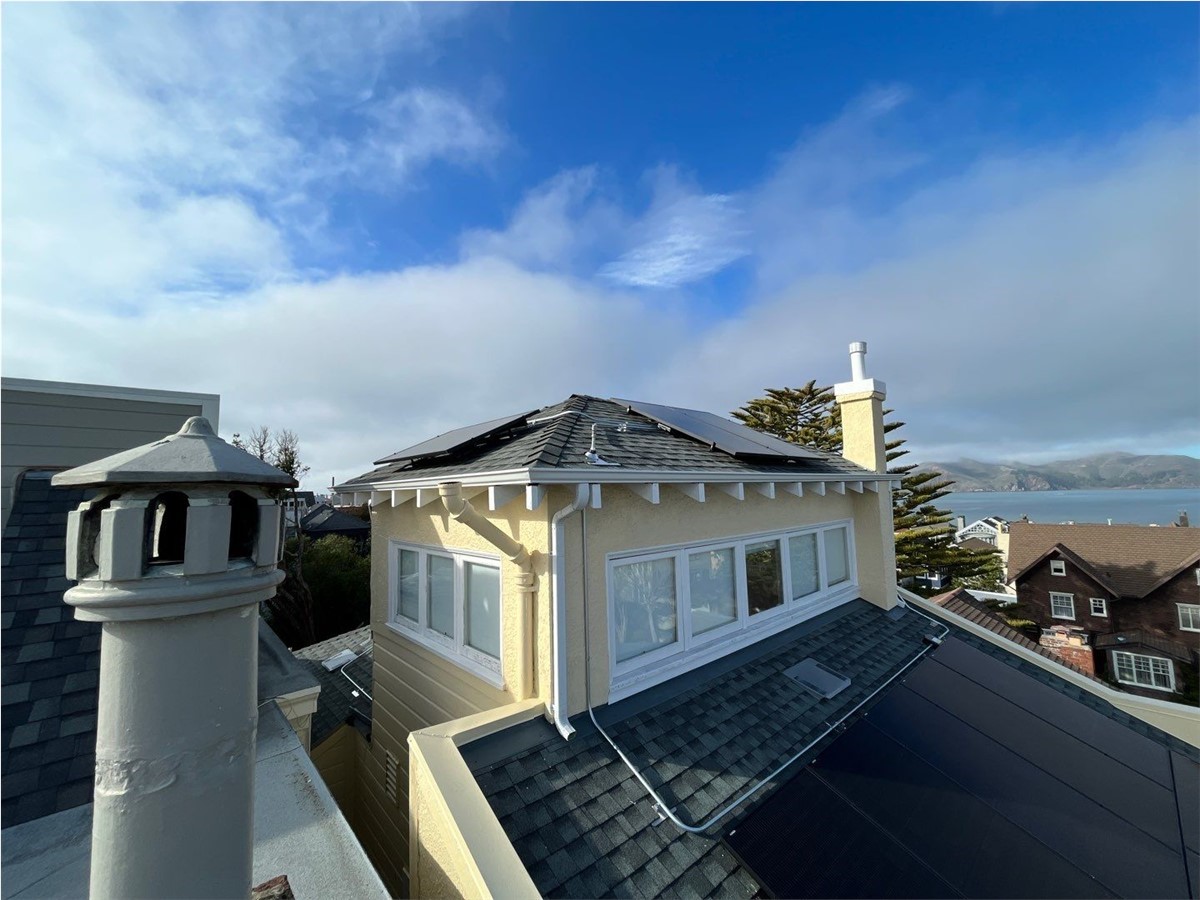
At Mr. Roofing, we're showing homeowners how easy it is to install and enjoy solar power one house at a time. Allow us to explain more about solar roofing and how it works below.
What Does a Solar Roofing System Contain?
Before you learn how solar power is produced, it's a good idea to understand how a solar roofing system is set up. There are multiple types of solar roofing available on the market.
An integrated roofing system features slim panels that built-into the roof like shingles. It's a pricier option that may require a little more work, yet the integrated system looks more attractive and doesn't interfere with the appearance of the roof line.
The standard solar roofing system uses metal racking to attach the panels to the roof. These racks look like steel frames that are screwed into the roof rafters.
Both solar systems will include:
- Solar panels
- Inverters
- A power monitoring system
Many South San Francisco homeowners also opt to install battery storage that provides power when the sun goes down or in the event of the main electrical grid going out.
How it All Works Together
Solar panels are the key to creating power from the sun's energy. These panels contain multiple rows of solar cells, which are thin slices of silicon. Two slices of silicon are sandwiched together inside each cell. When solar rays hit the surface of the silicon cell, they are strong enough to knock electrons loose from the molecular bonds in the silicon. Here's what happens with the free electrons:
- Electrons gravitate towards one side of the solar cell where they are flow through metal circuits out of the solar panel
- The circuits are connected to the power inverter, which converts the natural DC flow of the electrons to AC power.
- AC power is sent into the house via electrical wiring where it is used to run your appliances, lights, and household mechanical systems.
- Electricity (electrons) is returned to the solar panel after passing through your electrical appliances to complete the circuit.
The entire solar roofing system is one completed circuit that runs constantly when the sun is out. Since the only moving part in this system is the electron and even that is returned the panel when not in use, it can last for decades before needing replacement.
If you are curious to learn more about our solar solutions, reach out to Mr. Roofing about a free home consultation. One of our roofing experts will be happy to explain the system in more detail and provide a free price estimate for installation. Just give us a call or fill out our online form to get started right away.
Tags
Subscribe to Mr. Roofing's Blog









Comments